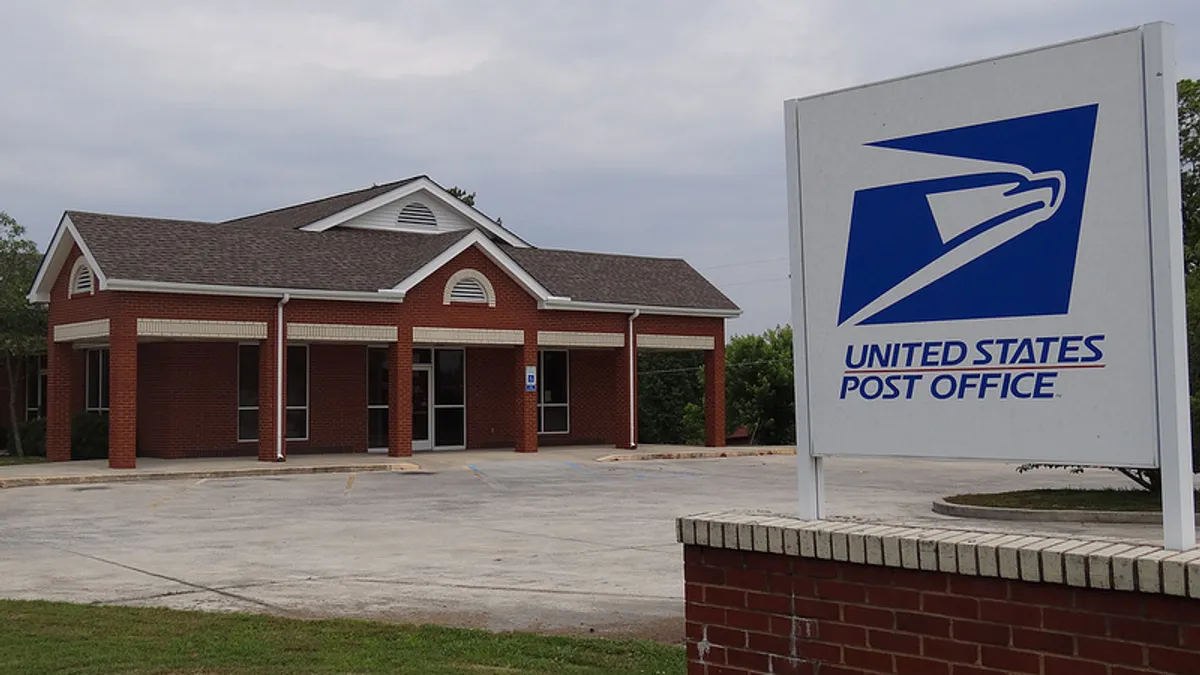Dive Brief:
- President Donald Trump on Friday criticized the United States Postal Service (USPS) for "charging Amazon and others so little to deliver their packages" via Twitter. "Should be charging MUCH MORE!"
- The tweet is the latest in a slew of attacks by Trump on Jeff Bezos' business empire. In that time, Reuters reports Trump has falsely claimed Amazon does not pay sales tax and attacked the "Amazon Washington Post" repeatedly.
- However, Trump is not the first to question the sustainability of USPS' business model. CNN Money reports the Postal Service's revenues do not cover the cost of delivery, and an opinion piece in The Wall Street Journal recently claimed USPS grants a special "$1.46 subsidy" to each Amazon package.
Why is the United States Post Office, which is losing many billions of dollars a year, while charging Amazon and others so little to deliver their packages, making Amazon richer and the Post Office dumber and poorer? Should be charging MUCH MORE!
— Donald J. Trump (@realDonaldTrump) December 29, 2017
Dive Insight:
Trump may not set rates at the Postal Service, but his latest tweet gives voice to a long-running debate within supply chain: should free shipping be subsidized?
As the first mover, Amazon set consumer expectations high when it offered free shipping for certain orders. Since then, any online retailer seeking to succeed has felt forced to do the same in order to compete with the e-tailer. Walmart, for example, offers free two-day shipping for orders above $35, and discounts on select items if consumers choose to pick up the item in store.
But supply chain managers know transportation is not free, and last-mile delivery is the most expensive leg of a product's journey.
To offer free shipping on all items is akin to marking down products without a strategy, or willingly taking a hit on margins for the sake of higher sales. Even Amazon, with its global distribution network, has yet to find a way to cover the costs of delivery. It may be financial suicide — but customer is king.
The same could be said for parcel delivery providers. The last-mile delivery market may be dominated by private companies like UPS and FedEx, but few can match the low prices offered by the Postal Service. After all, no other company has the network in place to reach every door in the U.S., every day.
However, the market is far from a monopoly. Just as Amazon and Walmart must manage their supply chains to compete in terms of pricing and delivery options, UPS and FedEx compete for volume with the USPS, using rates and service options for leverage.
For carriers, too, the customer is king — only the customer is the retailer.
Business units and agencies alike must serve their clients, or lose business. If the USPS were to charge more, CNN Money suggests, UPS and FedEx would gain the business. And a Citigroup analysis suggests USPS would need to charge 40% more per package to cover its costs.
Recent news suggest carriers could get away with higher prices, too.
Last year, UPS, FedEx and USPS not only all raised rates, but some also added new fines and warned retailers they would be less lenient in contract negotiations. The reason? Volume was too high, and the carriers margins were taking an unnecessary hit by subsidizing retail delivery practices.
Still, free shipping is more the norm than the exception now, and customers have come to expect it. The news that carriers have come to expect it, and that even the President recognizes the price mismatch should come as a warning to retail supply chain managers to find other methods of saving transportation costs.














